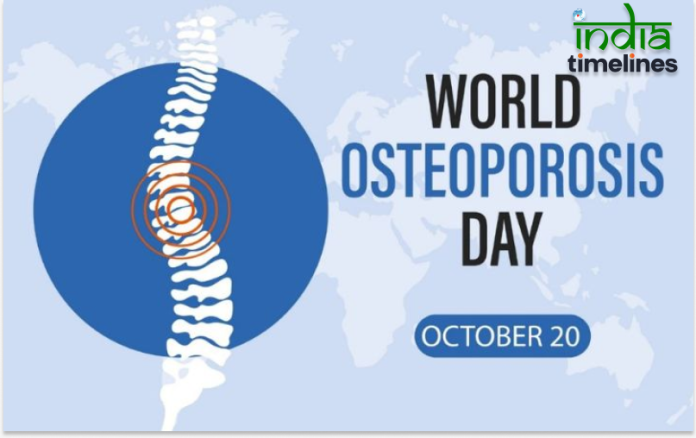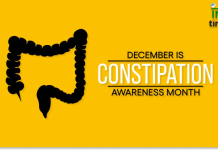
World Osteoporosis Day 2024, observed on October 20th, continues its mission to raise global awareness about osteoporosis, a bone disease that silently affects millions worldwide. The theme for this year focuses on empowering individuals with the knowledge and resources needed to prevent, detect, and treat osteoporosis.
The day serves as a wake-up call for both individuals and healthcare systems to prioritize bone health and take action to prevent the debilitating effects of osteoporosis.
The Significance of World Osteoporosis Day 2024
World Osteoporosis Day 2024 emphasizes the urgency of addressing bone health issues globally. As life expectancy rises, the burden of osteoporosis grows, making it critical to educate people about prevention strategies.
This year’s theme encourages individuals to “Take Action for Stronger Bones,” motivating people to adopt lifestyle changes and seek early diagnosis to protect their bone health.
What is Osteoporosis?
Osteoporosis is a condition where bones become brittle and fragile due to loss of density, leading to an increased risk of fractures. The disease often progresses without symptoms, earning it the nickname “the silent disease.” Most people don’t realize they have osteoporosis until they suffer a fracture, often in the hips, spine, or wrists.
Risk Factors for Osteoporosis
Osteoporosis can affect anyone, but certain risk factors increase susceptibility:
- Age: Risk increases as we get older.
- Gender: Women, especially postmenopausal, are at higher risk.
- Family History: Genetics play a role in bone density.
- Lifestyle Choices: Smoking, excessive alcohol use, and lack of exercise contribute to bone weakness.
- Diet: A lack of calcium and vitamin D negatively impacts bone health.
The Importance of Early Diagnosis
Early detection is crucial for managing osteoporosis. Bone density tests, such as a DEXA scan, can identify the early stages of bone loss, allowing for intervention before fractures occur. World Osteoporosis Day 2024 aims to encourage people at risk, particularly older adults and postmenopausal women, to undergo regular screenings.
Key Objectives of World Osteoporosis Day 2024
The key objectives of this year’s campaign include:
- Raising Awareness: Educating the public about osteoporosis, its risk factors, and consequences.
- Encouraging Preventive Measures: Promoting the importance of diet, exercise, and lifestyle modifications to strengthen bones.
- Supporting Research and Policy: Advocating for more research on osteoporosis and pushing for healthcare policies that improve bone health management.
How to Prevent Osteoporosis
Prevention is vital to reducing the risk of osteoporosis. Here are practical steps everyone can take to maintain strong bones:
- Calcium-Rich Diet: Ensure you consume enough calcium through dairy products, leafy greens, and fortified foods.
- Vitamin D: Vitamin D aids in calcium absorption. Spend time outdoors for natural sunlight and eat foods like fatty fish.
- Exercise Regularly: Weight-bearing and resistance exercises help strengthen bones.
- Quit Smoking: Smoking accelerates bone loss, so quitting can reduce your risk.
- Limit Alcohol Consumption: Excessive drinking can interfere with calcium absorption.
The Role of the International Osteoporosis Foundation (IOF)
The International Osteoporosis Foundation (IOF) spearheads global efforts to reduce the burden of osteoporosis. As the primary organizer of World Osteoporosis Day, the IOF provides educational materials, hosts events, and works with healthcare professionals and governments to promote better bone health management worldwide.
In 2024, the IOF will continue its mission by launching new campaigns aimed at empowering individuals to take control of their bone health.
Global Campaigns for World Osteoporosis Day 2024
Around the world, countries and organizations will be hosting events to mark World Osteoporosis Day. These may include:
- Public Health Screenings: Free bone density tests in hospitals and clinics.
- Workshops: Educational seminars on osteoporosis prevention and treatment.
- Awareness Walks and Runs: Events to raise awareness and promote bone health.
- Social Media Campaigns: Engaging online activities that encourage people to share information about osteoporosis.
The Impact of Osteoporosis on Quality of Life
Osteoporosis significantly affects the quality of life, particularly for older adults. Fractures due to weak bones can lead to chronic pain, reduced mobility, and disability. Hip fractures, in particular, are linked to increased mortality in the elderly. Raising awareness about the importance of bone health can help mitigate these outcomes.
Women and Osteoporosis: Special Focus
Postmenopausal women are one of the most vulnerable groups to osteoporosis due to the loss of estrogen, a hormone that protects bones. Women over 50 should prioritize regular bone density tests and consider lifestyle adjustments to protect their bone health.
Men and Osteoporosis: A Lesser-Known Issue
While osteoporosis is often seen as a women’s issue, men are not immune. Men over 70 are at higher risk for osteoporosis, and the disease can have severe consequences for them as well. This year’s campaign aims to spread awareness that men should also take steps to ensure strong bones.
The Role of Nutrition in Preventing Osteoporosis
A balanced diet rich in nutrients is essential for bone health. Besides calcium and vitamin D, other nutrients such as magnesium, phosphorus, and vitamin K also play a role in maintaining bone strength. Incorporating whole foods, vegetables, and fruits can greatly reduce the risk of osteoporosis.
Exercise: Building Stronger Bones
Exercise is one of the most effective ways to maintain bone density. Weight-bearing exercises like walking, running, and strength training can help build strong bones. In addition, balance exercises such as yoga can reduce the risk of falls and fractures.
Osteoporosis and Aging: What You Need to Know
As we age, our bones naturally lose density. However, this process can be accelerated by poor lifestyle choices or underlying medical conditions. The elderly are especially vulnerable to fractures, and ensuring they get enough nutrients and exercise can improve their bone health and quality of life.
The Future of Osteoporosis Treatment
While there is no cure for osteoporosis, there have been significant advancements in treatment. Medications like bisphosphonates, hormone replacement therapy, and newer drugs like denosumab can slow bone loss and even improve bone density. World Osteoporosis Day 2024 encourages continued research and innovation to find better treatments and prevent the disease altogether.
India Time Lines
Conclusion
World Osteoporosis Day 2024 is an opportunity for people worldwide to reflect on their bone health and take action to prevent osteoporosis. Whether through improved diet, exercise, or regular screenings, everyone can take steps to protect their bones and enjoy a healthier, more active life. Let’s join together this October 20th to raise awareness and ensure that bone health becomes a priority for all.
FAQs
1. What is the theme for World Osteoporosis Day 2024?
The theme for 2024 is “Take Action for Stronger Bones,” focusing on raising awareness and promoting lifestyle changes to prevent osteoporosis.
2. Who is at risk of osteoporosis?
Postmenopausal women, older adults, and those with a family history of osteoporosis are at higher risk, though men over 70 are also vulnerable.
3. How can I prevent osteoporosis?
Prevention includes a calcium-rich diet, vitamin D intake, regular exercise, and avoiding smoking and excessive alcohol consumption.
4. What are common treatments for osteoporosis?
Treatments include medications like bisphosphonates, hormone replacement therapy, and lifestyle changes such as diet and exercise.
5. Can osteoporosis be reversed?
While osteoporosis can’t be fully reversed, treatments can slow bone loss and, in some cases, improve bone density.



































